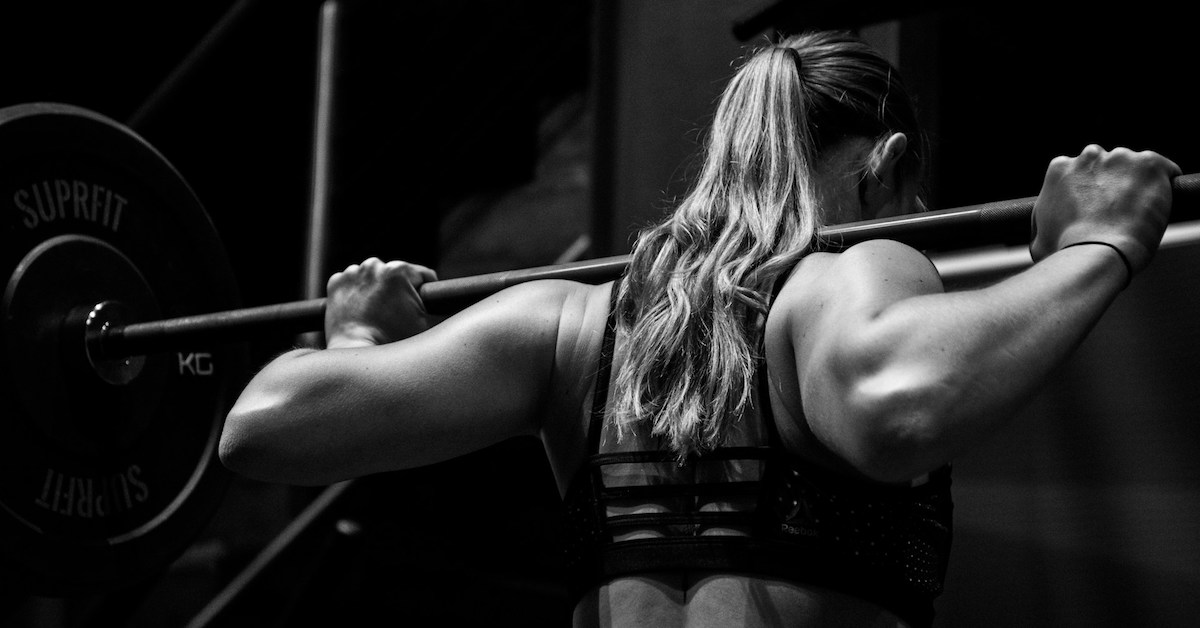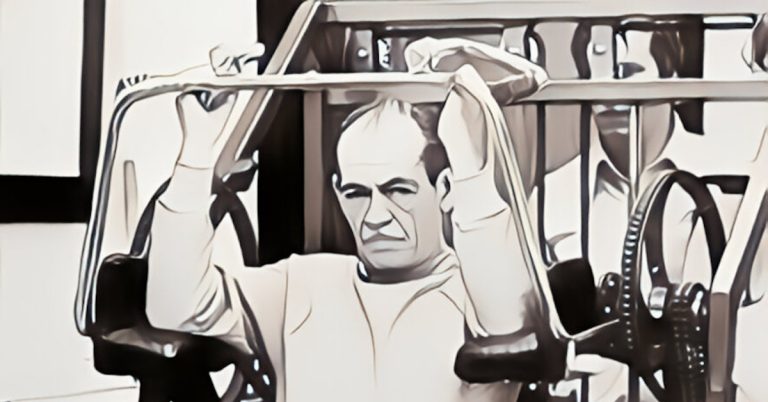Walk into any gym, and certain thoughts cross your mind: fake boobs, synthol arms, lipo six-pack, calf implants—or “that guy’s juicing, for sure!” We all do it. You may not say it out loud, but you’re thinking it.
Implants, synthol, and liposuction are relatively recent, but steroids have been around for decades—and they’ve played a major role in shaping not just muscle, but training equipment itself. That power rack in your gym? You can thank steroids for that.
When Milligrams Turn Into Grams
Let’s be honest—steroids have been a part of sports for decades. Many athletes haven’t just used them; they’ve abused them, especially in bodybuilding. Pick any top competitor from the past 50 years, and odds are they weren’t just dabbling in the sauce—they were taking it by the bucketload.
In a fascinating Iron Radio Podcast interview, Dr. Mauro Di Pasquale, a world-renowned nutrition and sports medicine expert, revealed the sheer scale of steroid use in the ‘70s and ‘80s. He recalled a bodybuilder who downed an entire bottle of Dianabol at every meal—100 tablets per bottle, three times a day—on top of 2,000 to 3,000 mg per week of injectables.
Some of the top Mr. Olympia contenders back then used as much testosterone in a single month as the average male produces in a lifetime. Forget a few hundred or even a few thousand milligrams—some were hitting 10 grams of anabolic steroids per week.
Today, bodybuilding has reached an extreme. The physiques are beyond unrealistic, and the sport’s popularity has plummeted. According to Muscle, Smoke & Mirrors author Randy Roach, one reason mixed martial arts (MMA) has surged is that its athletes maintain a look that’s more attainable—and their strength is functional. Being able to kick the crap out of someone is an added bonus.
On the women’s side, you now have bikini, figure, fitness, and physique divisions, each representing different levels of muscularity. And what’s one of the biggest differences in preparing for each level?
The amount of drug use.
Too Much Muscle Mass is Dangerous
When I posted the video Models Are Fat! years ago, I knew it would be controversial. But the real backlash wasn’t about models—it was about my statement that too much fat or fat-free mass can be detrimental.
Hardcore lifters love muscle. To them, there’s no such thing as being too big. But there’s a point where muscle mass becomes a liability, not an asset. Every sport—or occupation—has an optimal level of hypertrophy. Too much muscle, just like too much fat, places strain on the body and can shorten lifespan, especially in those genetically predisposed to cardiovascular disease.
As Harry B. Paschall wrote in his 1950 book Muscle Moulding:
“Every pound of flesh you put on means the addition of hundreds or thousands of tiny capillaries to carry blood to nourish this flesh, and thus gives the heart and lungs and stomach and liver and kidneys more work to do. Get too fat and any insurance company can prove to you that you are sacrificing a good many years of normal life. Muscular ‘lumps’ of the showcase type may be just as fatal as fat.”
The “safe” amount of muscle varies from person to person, but deep down, most lifters instinctively know when they’ve crossed the line.
At 5’10”, I once bulked up to 225 solid pounds—and it was too much. I felt heavy, slow, and uncomfortable. Now, I hover around 200 pounds, where I feel strong, fast, lean, functional, and most importantly… healthy.
A heavily muscled individual under six feet tall, pushing 300 pounds or more, is at serious risk—especially if steroids are in the mix. Add a genetic predisposition to heart disease, and they may be a walking time bomb.
In the strength world, we’ve lost too many legends—Anthony Ditillo, Anthony Clark, and countless bodybuilders gone too soon. If excessive muscle mass doesn’t outright shorten lifespan, it definitely decreases quality of life. That’s something I learned from Dr. Robert Rakowski back in 2006.
Now, don’t get me wrong—I love functional muscle. I just don’t believe in packing on non-functional muscle at the expense of health.
And for those who’ve taken heavy doses of steroids, they know what it can do to their connective tissue. Muscles grow big and strong, but tendons and ligaments struggle to keep up. It’s a rupture waiting to happen.
The Steroid Influence on Strength Training
Whether you support or oppose steroids, there’s no denying that your training has been influenced by them.
A compelling Journal of Sport History paper titled Isometrics or Steroids? Exploring New Frontiers of Strength in the Early 1960s argues that the biggest revolution in strength training wasn’t isometrics—it was steroids.
Back in the ‘60s, weightlifters Bill March and Louis Riecke were making incredible gains using isometric training—pushing or pulling against an immovable barbell for 6-12 seconds. Under Dr. John Ziegler, they saw massive improvements.
But they weren’t just using isometrics.
They were using Dianabol.
According to Bill Starr (Weightlifting Journal, 1972):
“Hoffman, knowing that he could not capitalize on the sale of steroids, jumped in the slot with his isometric courses and equipment… Hoffman made a mint… as lifters throughout the world pulled and pushed hoping to get as strong as March and Riecke.”
Turns out, unless you combined isometrics with those little pink pills, those crazy strength gains never happened.
Fast forward to the Colorado Experiment in 1973. Casey Viator packed on 63.21 pounds of muscle in just 28 days. He had taken a five-month layoff prior, dieted aggressively, and was paid per pound of muscle gained—but still, 63 pounds in a month?
How did he do it?
A combination of force-feeding, high-intensity training (HIT), Nautilus equipment… and, let’s be honest, probably steroids.
This skyrocketed the popularity of Nautilus machines, making Arthur Jones a fortune. As Bill Pearl wrote in Getting Stronger:
“Nautilus machines became so popular during the ‘70s and early ‘80s that it was said that more money was spent on Nautilus equipment than on all other commercial gym equipment being sold at that time.”
Today, those old Nautilus machines are rare, but one thing remains a staple in every serious gym:
The power rack.
Now you know how it got there.

Stretching Smarter: The Do’s and Don’ts for Maximum Flexibility
By JP CatanzaroOriginally published: September 23, 2014 – Updated for 2025 Want to boost flexibility, prevent injuries, and optimize performance?

Training Economy: How Weight Training Can Be Your All-in-One Fitness Solution
Recent research has once again confirmed what many in the weightlifting community already know: weight training isn’t just for building

4 Invaluable Lessons from Strength Training Pioneer Arthur Jones
Arthur Jones, a true visionary in the realm of strength training, left an unforgettable mark on the fitness industry with
follow
Error: No feed with the ID 2 found.
Please go to the Instagram Feed settings page to create a feed.
